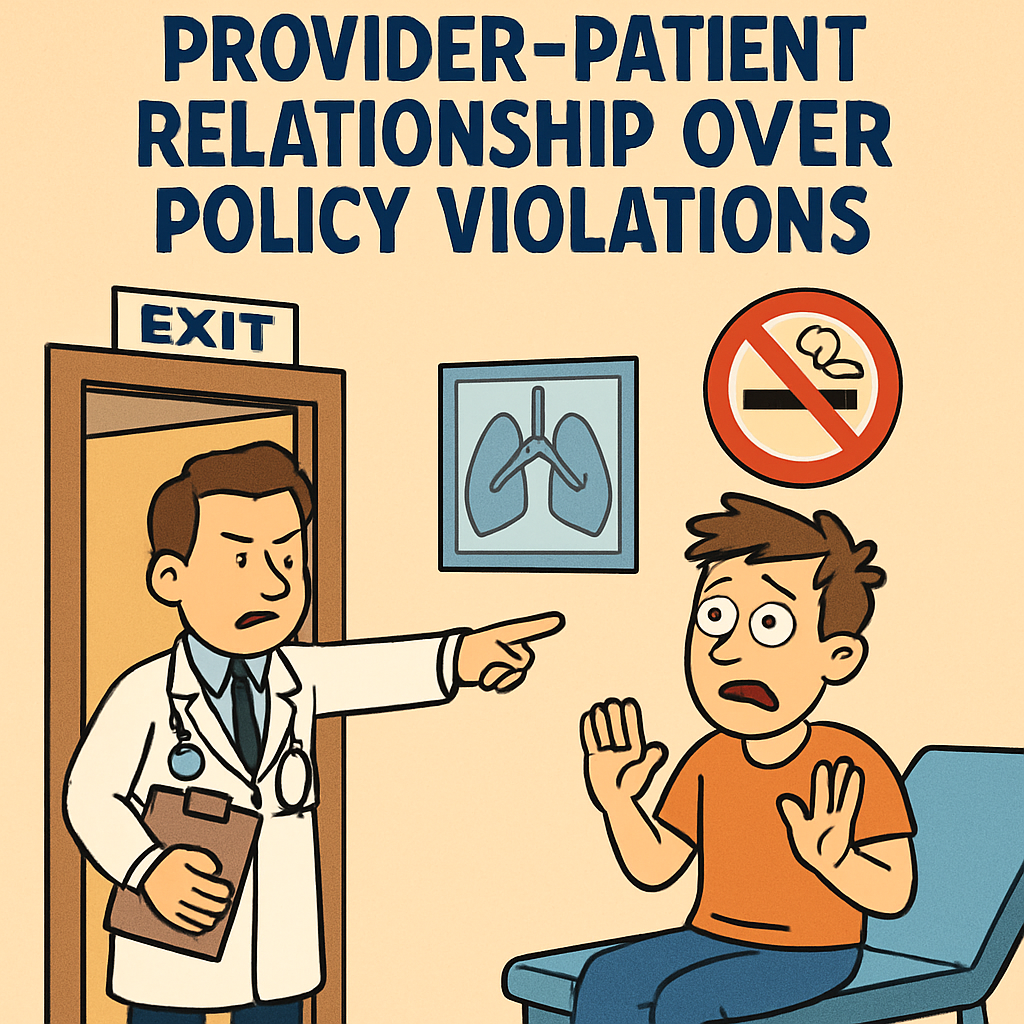
When and How to Terminate a Provider–Patient Relationship Over Policy Violations
Doug Jorgensen
April 9, 2025
Introduction: The Last Resort
Ending a provider–patient relationship is never the preferred outcome, but there are times when continued care is no longer safe, ethical, or compliant.
In controlled substance management, repeated or serious policy violations can force this decision.
Termination should always be a structured, documented, and legally compliant process.
When Termination May Be Appropriate
1. Repeated Noncompliance
- Multiple missed urine drug tests, pill counts, or follow-up visits.
- Ongoing failure to adhere to the controlled substance agreement.
2. Evidence of Diversion or Misuse
- Selling, sharing, or otherwise distributing prescribed medications.
- Positive drug tests for illicit substances without valid explanation.
3. Threatening or Abusive Behavior
- Verbal abuse, physical threats, or harassment toward staff.
- Creating a hostile or unsafe clinic environment.
4. Fraudulent Activity
- Altering prescriptions, falsifying medical information, or seeking medications under false pretenses.
5. Legal or Regulatory Mandates
- State board or DEA instruction to cease prescribing to a patient.
The controlled substance agreement should clearly define all infractions that may lead to changes in visit or urine testing frequency, potentially escalating to termination of care.
Step 1: Review Policies and Documentation
- Ensure that violations are clearly documented in the patient’s record.
- Confirm that actions taken are consistent with your written policy and applied uniformly across patients.
- Verify that the decision aligns with state laws and medical board guidelines.
Step 2: Provide Adequate Notice
- Most states require written notice before termination (often 30 days).
- This ensures continuity of care and prevents allegations of patient abandonment.
- Send notice via certified mail with a return receipt.
Step 3: Outline the Reason in Neutral Language
- Keep the explanation factual and policy-based.
- Example:
“Your treatment has not met the requirements outlined in our Controlled Substance Agreement, specifically regarding attendance at required monitoring visits.”
Step 4: Offer Continuity of Care
- Provide emergency care only during the notice period.
- Offer to transfer medical records to another provider upon patient request.
- Include referral resources where appropriate.
Step 5: Communicate Internally
- Alert all staff members of the termination to prevent accidental scheduling or prescription refills.
- Update EHR flags and patient lists accordingly.
Step 6: Avoid Pitfalls
- Never Terminate Abruptly Without Justification – Unless there’s an immediate threat to safety.
- Don’t Make It Personal – Termination is about policy adherence and patient safety, not emotion.
- Avoid Inconsistent Enforcement – Uniform application strengthens defensibility.
Example Termination Letter Outline
- Date and patient information.
- Statement of termination and effective date.
- Reason for termination (brief, factual, policy-based).
- Continuity of care offer (emergency services during notice period, referral resources).
- Instructions for transferring records.
- Provider signature.
If delivering the letter in person at an office visit, an administrator or staff member should be present to witness and corroborate the documented events by signing your documentation.
Benefits of a Structured Termination Process
- Protects the provider and practice from legal claims of abandonment.
- Demonstrates professionalism and adherence to policy.
- Maintains clarity and consistency in high-risk prescribing cases.
- Reinforces the seriousness of compliance requirements.
Final Thoughts: The Right Way to Say Goodbye
Terminating a provider–patient relationship is a serious decision that should be well-documented, legally compliant, and free from personal bias.
Handled properly, it protects the practice, upholds professional standards, and ensures that patient safety remains the priority.
The goal isn’t to punish—it’s to preserve the integrity and safety of care.
About the Author
Douglas J. Jorgensen, DO, CPC, FAAO, FACOFP
Dr. Doug is a physician, consultant, and national educator on healthcare compliance, provider–patient relationships, and controlled substance policy enforcement. He helps practices create fair, defensible processes for ending care when policies are violated.


